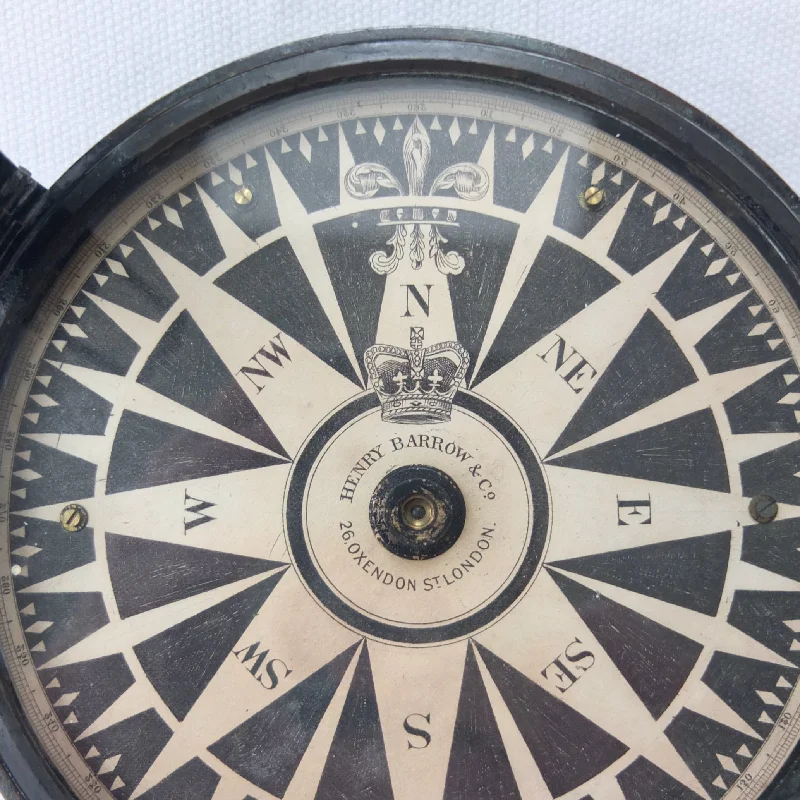A rare Admiralty standard prismatic compass, made c.1845, by Henry Barrow & Co. With a hand-drawn compass card, bronzed-finish brass case, prism and vane sights, transit lock, and manual brake. The compass card is signed ' Henry Barrow & Co., 26 Oxendon Street, London'. The Admiralty compass was produced by Henry Barrow (1790-1870), one of the finest instrument makers of the mid-19th century
The compass has a transit locking mechanism operated by a slide at the side of the case, and a card brake operated by a push-button. There is a folding prism (with coloured filters) on one side of the case and a folding sighting vane complete with mirror on the opposite side. The compass card is graduated to 16 points and to 360 degrees, with a jewelled pivot cap. The base has a screw-threaded mounting for attaching the compass to a tripod or other fixed mounting.
A very well made, high quality instrument, this compass is a fine example of the work of one of the best maker's of the period. Similar examples, and various other compasses made by Henry Barrow, can be seen in the collection of the Royal Museums at Greenwich - and in the collection of the sciencemuseumgroup.org.uk
Henry Barrow (1790-1870): was one of the finest British scientific instrument makers of his time. He may have been apprenticed to George Dollond or Edward Troughton, as he is known to have worked for both of them before 1829. From 1830-1839 he was Mathematical Instrument Maker to the Surveyor of India, working very closely with Sir George Everest, maintaining the complex scientific instruments that were vital to the work of the Great Survey of India. After returning to England, Barrow took over the business of Thomas Charles Robinson at Devonshire Street, London from 1842. From 1845 - c.1860 he traded as H. Barrow & Co. from premises at 26 Oxendon Street, London. He is known to have produced compasses, theodolites, and other scientific instruments during this period, supplying them to both the East India Company and the Great Survey of India. He also made compasses for the Admiralty, some of which were used in Arctic expeditions during the 1840s. During his time with The Great Survey, Sir George Everest had praised Barrow's work on the Cary Great Theodolite: 'I must do the artist (Barrow) the justice to say that for excellence of workmanship, accuracy of division, steadiness, regularity, and glibness of motion, and the general elegance and nice fitting of all its parts, not only were my expectations exceeded but I really think it is as a whole as unrivalled in the world as it is unique.' Henry Barrow was made a Fellow of the Royal Astronomical Society in 1849, and retired around 1860. His long career had made him a wealthy man, and he left an estate valued at more than £65,000.
Condition:
In good condition, and full working order. The compass finds North very well. The glass, sighting vane, and prism are all in good condition. The compass card is in good condition, with some marks. Both the manual brake and transit lock are working perfectly. There is some wear and marking to the original bronzed finish of the brass case and the frame of the folding sight.
Dimensions: 135mm diameter, case height 30mm, sights (ht. above glass) 100mm

